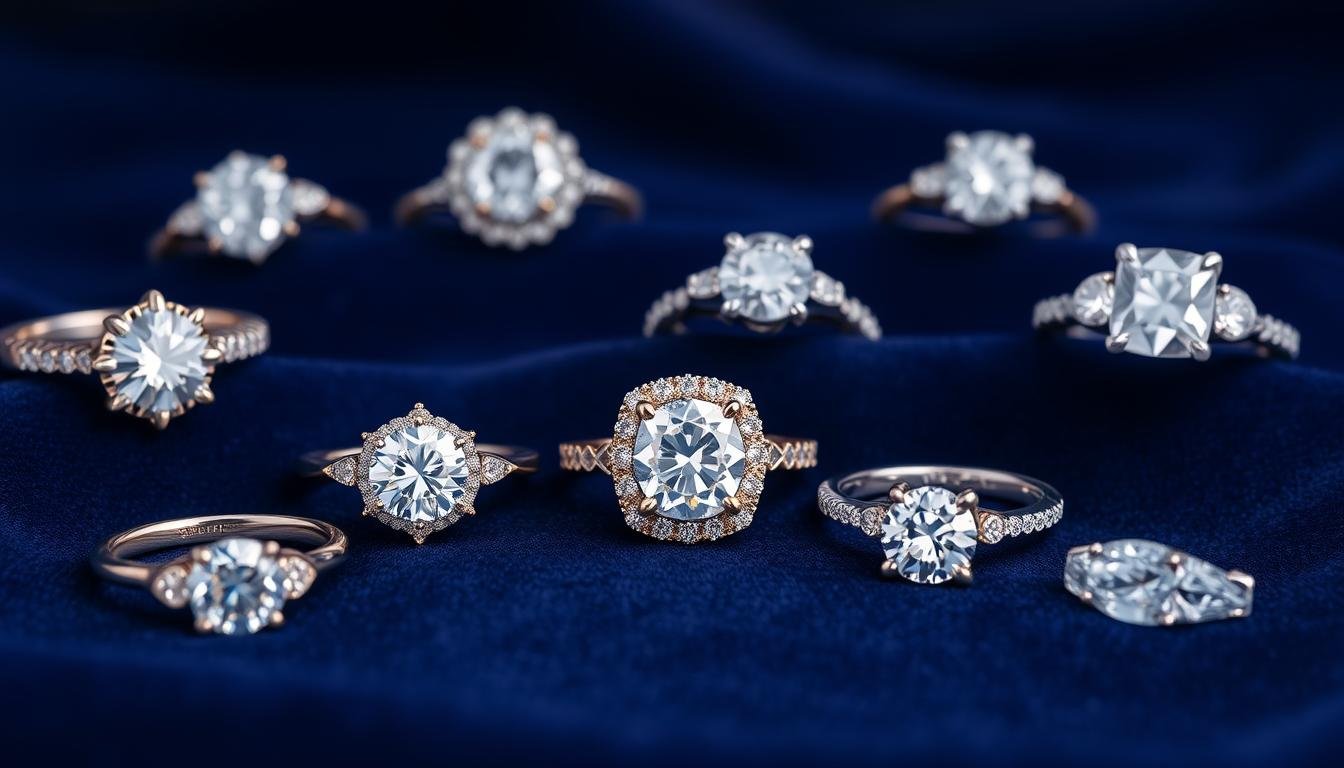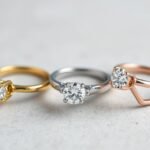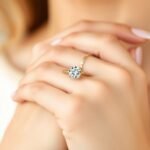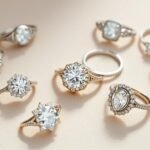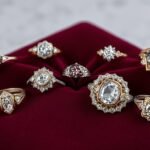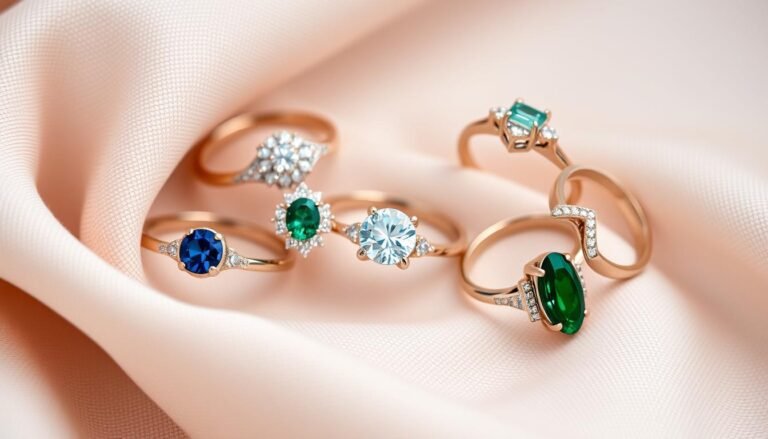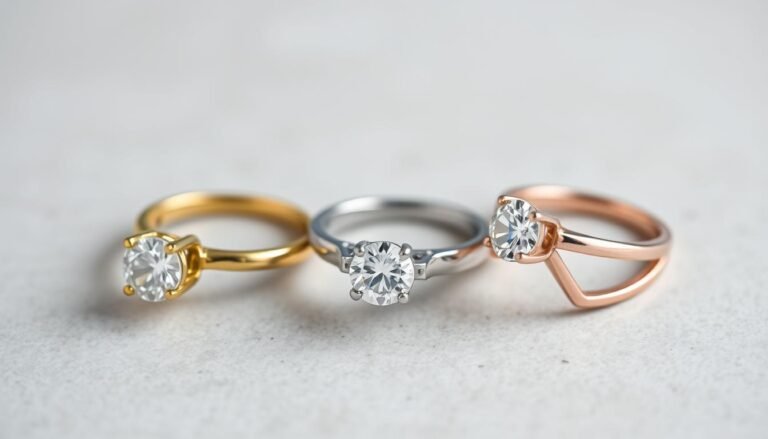Engagement Rings: Finding the Perfect Symbol of Your Love
An engagement ring is more than just a piece of jewelry—it’s a timeless symbol of love, commitment, and the promise of a shared future. Whether you’re actively shopping or just beginning your research, finding the perfect engagement ring involves understanding the various styles, materials, and considerations that go into this significant purchase. This comprehensive guide will walk you through everything you need to know about engagement rings, from traditional designs to modern trends, helping you make an informed decision that will delight your partner for years to come.
This Website contains affiliate links. That means I may earn a small commission if you purchase through my links, at no extra cost to you.
The Cultural Significance of Engagement Rings
Engagement rings have been exchanged as symbols of commitment for centuries, with the tradition dating back to ancient Rome. The modern practice of giving diamond engagement rings gained popularity in the 20th century, becoming a cultural cornerstone of the marriage proposal process. Today, these rings represent not just the promise of marriage, but also serve as expressions of personal style, status, and the unique bond between partners.
In many cultures, the engagement ring is worn on the fourth finger of the left hand, based on the ancient belief that this finger contained the “vena amoris” or “vein of love” that connected directly to the heart. While traditions vary across cultures, the sentiment behind the ring remains universal—a visible symbol of commitment and the beginning of a lifelong journey together.
Types of Engagement Rings
Engagement rings come in a variety of styles, each with its own unique characteristics and appeal. Understanding these different types will help you narrow down options that best match your partner’s personal style and preferences.
Solitaire Engagement Rings
The solitaire setting is timeless and elegant, featuring a single center stone secured by prongs. This classic design puts all the focus on the diamond itself, making it perfect for showcasing a high-quality center stone. Its simplicity makes it versatile enough to complement any style or wardrobe.

Halo Engagement Rings
Halo settings surround the center stone with a circle (or halo) of smaller pavé diamonds, creating the illusion of a larger center stone and adding extra sparkle. This style offers maximum brilliance and can make a modest-sized center diamond appear significantly larger, providing excellent value and visual impact.

Three-Stone Engagement Rings
Three-stone rings feature a center diamond flanked by two smaller stones, often representing the couple’s past, present, and future together. This meaningful design offers versatility in stone combinations—you can pair diamonds with colored gemstones for a personalized look that tells your unique love story.
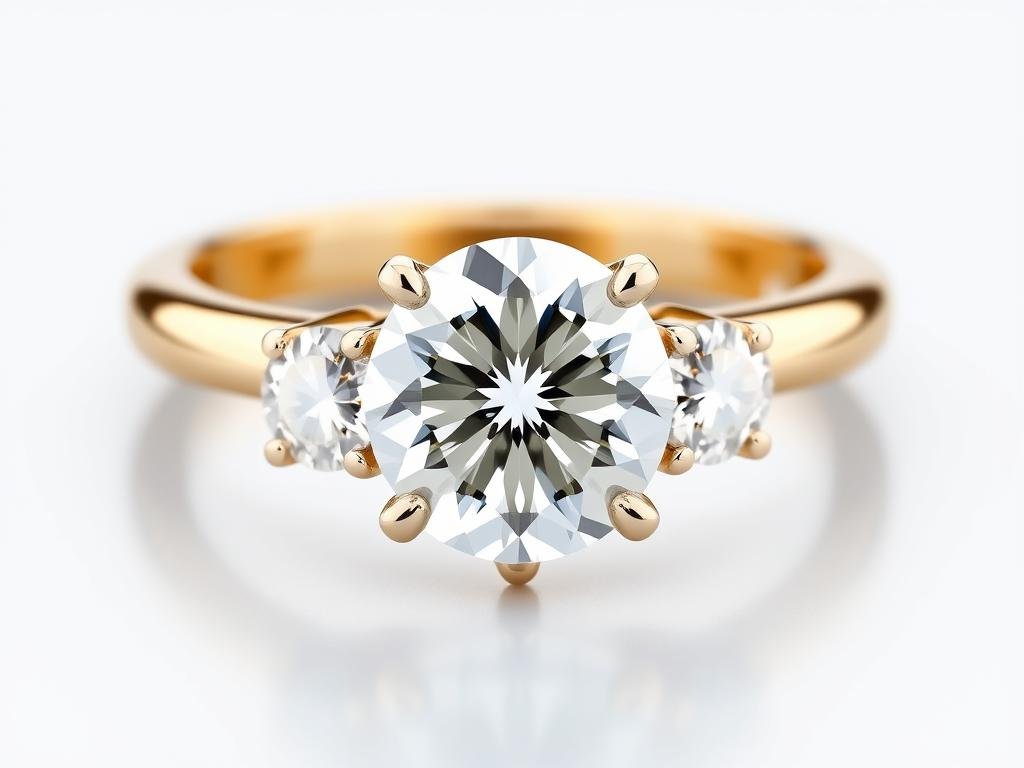
Vintage-Inspired Engagement Rings
Vintage-inspired rings feature intricate details like milgrain (tiny beaded details), filigree (delicate metal wirework), and unique stone arrangements that echo designs from bygone eras. These rings appeal to those who appreciate craftsmanship, history, and distinctive character in their jewelry.

Hidden Halo Engagement Rings
A modern variation of the traditional halo, the hidden halo places small diamonds around the setting beneath the center stone, creating a ring of sparkle that’s visible from the side. This contemporary design adds unexpected brilliance and dimension while maintaining a sleek profile from the top view.

Pavé Engagement Rings
Pavé (pronounced “pa-vay”) settings feature small diamonds set closely together along the band, creating a continuous surface of sparkle. This setting style adds brilliance to the overall ring while keeping the focus on the center stone, offering a perfect balance of glamour and elegance.
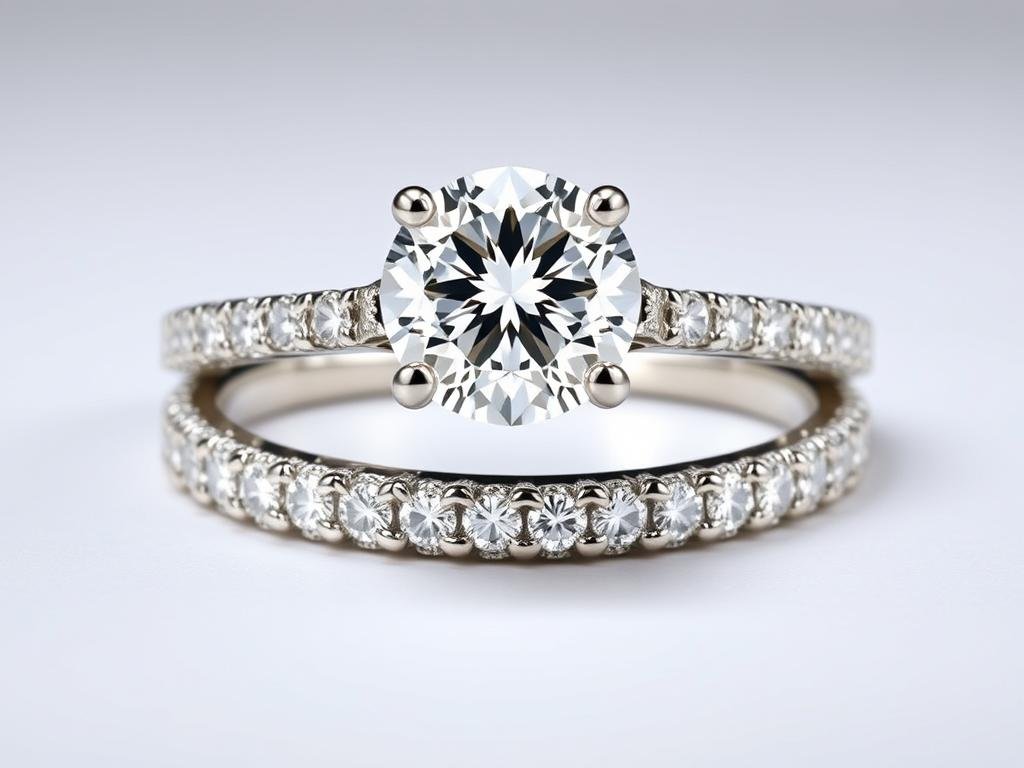
Find Your Perfect Vintage-Inspired Ring
Discover unique vintage and antique-inspired engagement rings with timeless charm and character.
Popular Diamond Shapes for Engagement Rings
The shape of the diamond dramatically influences the overall look and character of an engagement ring. Each shape has unique properties that affect how light interacts with the stone, creating different patterns of brilliance and fire.
Round Brilliant
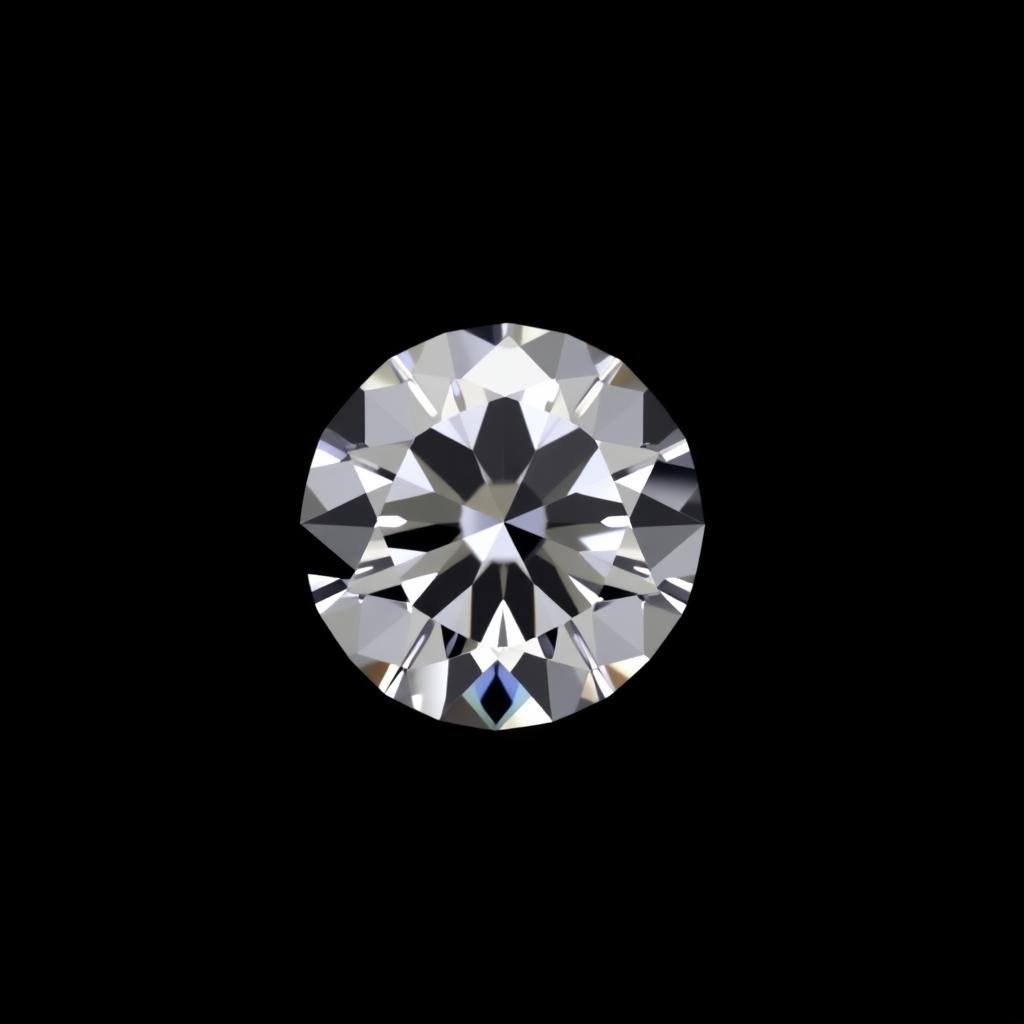
The most popular and classic diamond shape, designed to maximize brilliance with 58 facets. Round diamonds offer exceptional sparkle and are considered the most versatile for various setting styles.
Princess Cut
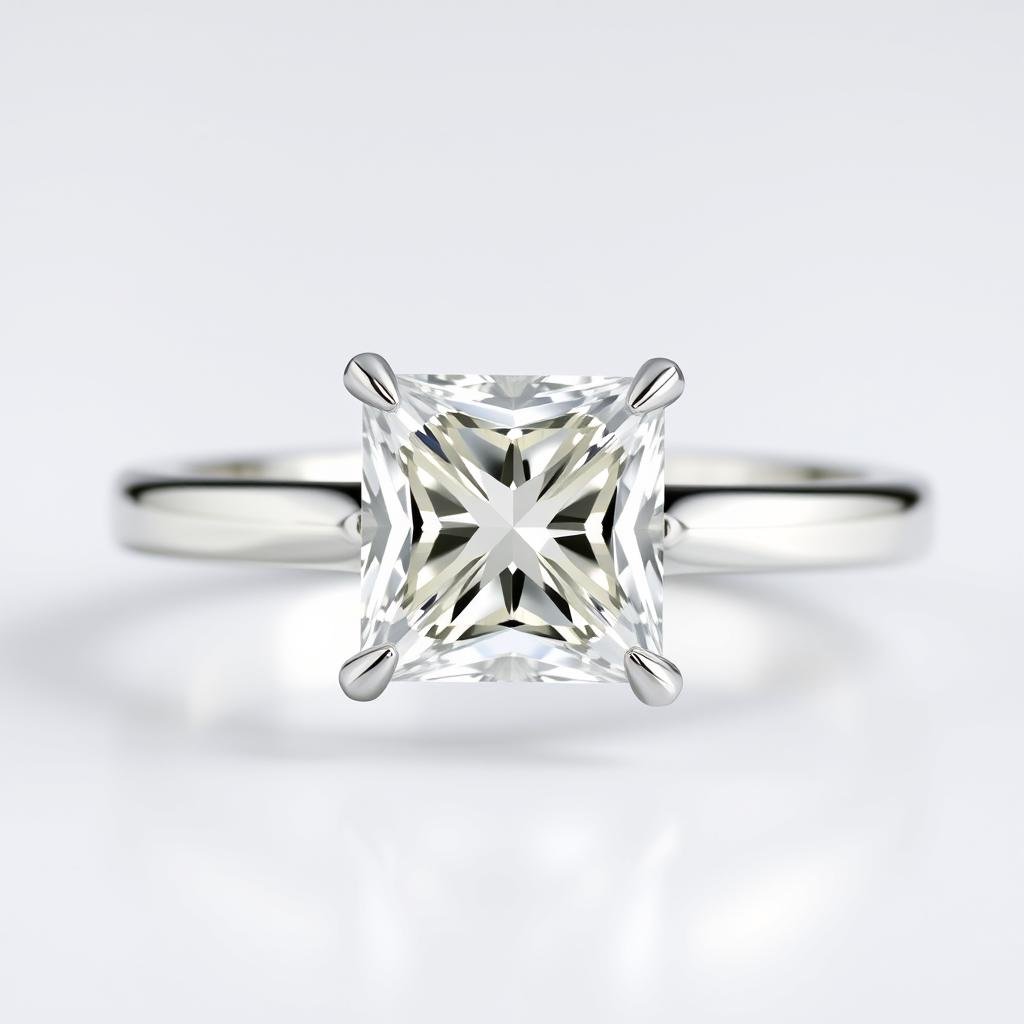
A square or rectangular shape with pointed corners and numerous facets that create excellent brilliance. Princess cuts offer a contemporary look while maintaining impressive sparkle.
Oval Cut

An elongated version of the round brilliant that can make fingers appear longer and slimmer. Oval diamonds combine excellent brilliance with a distinctive, elegant shape.
Cushion Cut

A square or rectangular shape with rounded corners, resembling a pillow. Cushion cuts offer a romantic, vintage appeal with larger facets that showcase the diamond’s clarity.
Emerald Cut

A rectangular shape with step-cut facets and cropped corners. Emerald cuts create a hall-of-mirrors effect rather than the sparkle of brilliant cuts, highlighting the diamond’s clarity.
Pear Shape

A teardrop design that combines elements of round and marquise cuts. Pear-shaped diamonds offer a distinctive look that can elongate the finger when worn with the point facing outward.
Explore Diamond Engagement Rings
Find the perfect diamond engagement ring in various cuts, settings, and styles to match your unique love story.
Metal Options for Engagement Rings
The metal you choose for your engagement ring affects not only its appearance but also its durability, maintenance requirements, and how it complements your partner’s skin tone and lifestyle.
White Gold
White gold is created by alloying yellow gold with white metals like palladium or nickel and adding a rhodium plating for extra brightness. It offers a similar appearance to platinum at a more accessible price point. White gold rings require occasional replating to maintain their bright white finish, typically every few years depending on wear.

Yellow Gold
Traditional and timeless, yellow gold brings warmth and classic appeal to engagement rings. Available in different purity levels (10K, 14K, 18K), yellow gold offers varying intensities of golden color and durability. Higher karat gold has a richer color but is softer, while lower karat gold is more durable but less intensely golden.
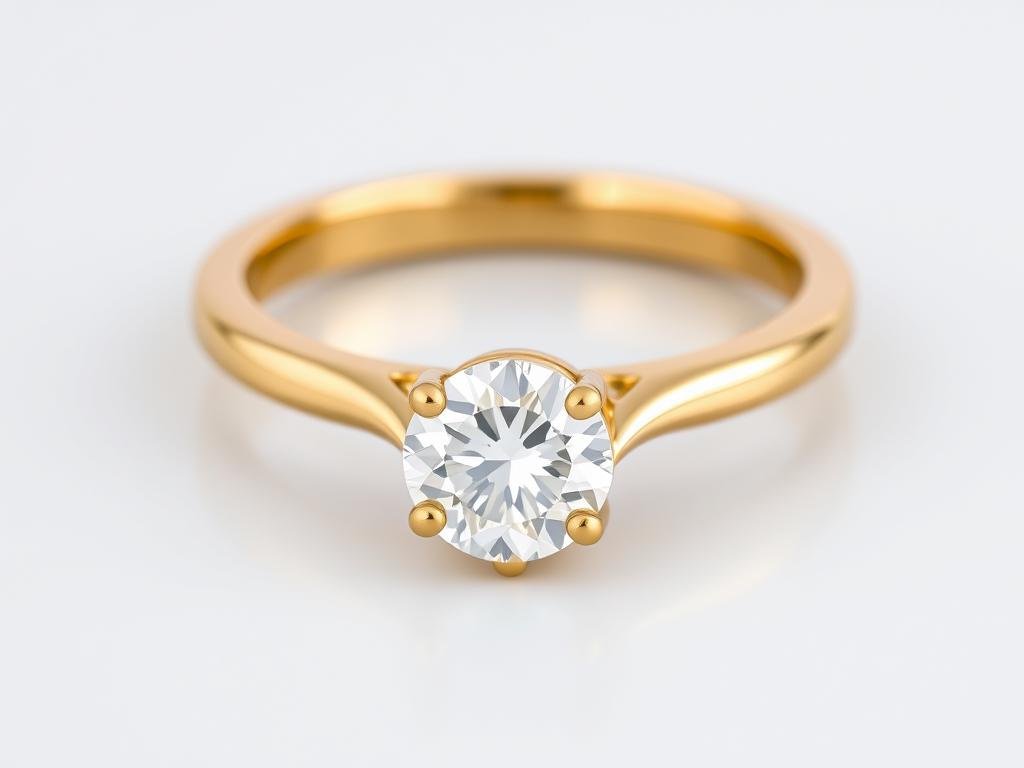
Rose Gold
Rose gold derives its distinctive pink hue from copper in the alloy, creating a romantic and vintage-inspired look. This metal has gained significant popularity in recent years for its unique color and warm appearance. Rose gold is also quite durable due to the copper content, making it suitable for everyday wear.
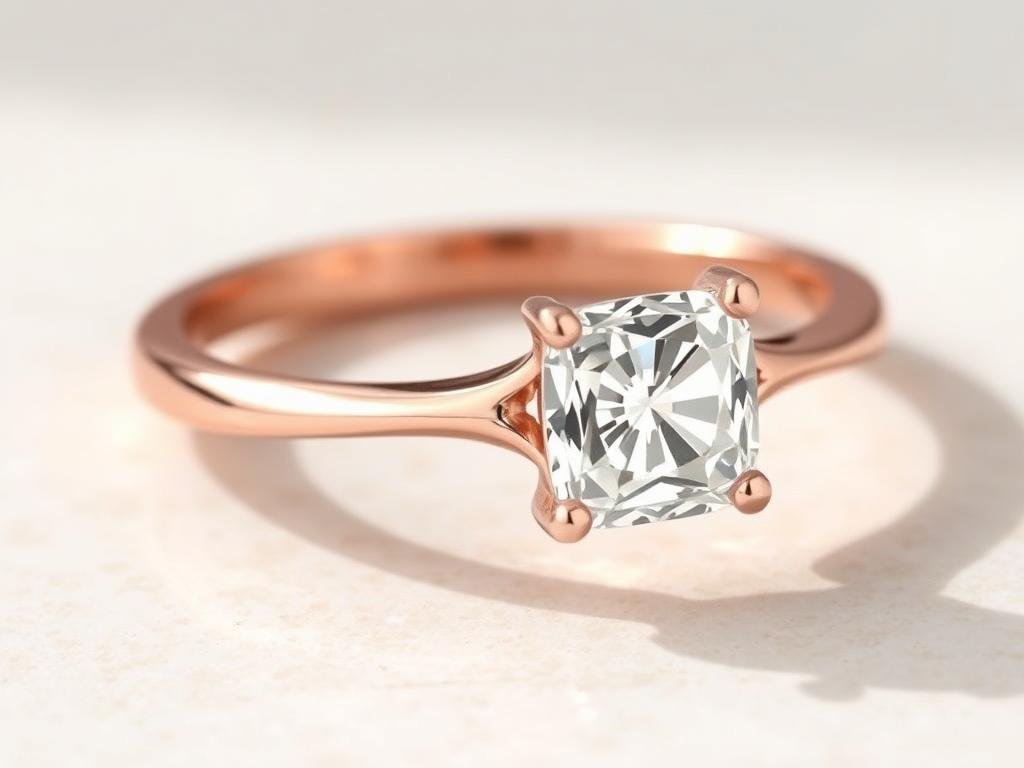
Platinum
Platinum is a premium choice known for its durability, natural white color, and hypoallergenic properties. While more expensive than gold options, platinum’s density makes it extremely durable and resistant to wear. It develops a unique patina over time that many consider part of its character and appeal.

Metal Considerations
When choosing a metal for your engagement ring, consider these factors:
- Skin tone compatibility (warm tones often pair well with yellow and rose gold, while cool tones complement white gold and platinum)
- Lifestyle and activity level (platinum and lower-karat golds offer better durability for active lifestyles)
- Maintenance preferences (white gold requires periodic replating, while platinum develops a patina)
- Allergies (platinum and higher-karat golds are typically better for sensitive skin)
- Budget considerations (platinum commands the highest price, followed by gold in descending karat order)
Important Factors When Choosing an Engagement Ring
Selecting the perfect engagement ring involves balancing several key considerations to ensure you find a ring that matches your partner’s style, meets quality standards, and fits within your budget.
The 4 Cs of Diamonds
When evaluating diamonds, gemologists use the 4 Cs as the universal standard for assessing quality and value:
Cut
The most important factor affecting a diamond’s brilliance and sparkle. Cut refers to how well the diamond’s facets interact with light, not its shape. Excellent and Very Good cuts command higher prices but offer superior sparkle.
Color
Diamonds are graded on a scale from D (colorless) to Z (light yellow or brown). The less color, the more valuable the diamond, with D-F considered colorless and G-J near colorless.
Clarity
Measures the presence of internal (inclusions) or external (blemishes) imperfections. The clarity scale ranges from Flawless (no imperfections) to Included (imperfections visible to the naked eye).
Carat
Refers to the diamond’s weight, not size. While larger diamonds are typically more expensive, a smaller diamond with excellent cut, color, and clarity can appear more brilliant than a larger stone of lower quality.
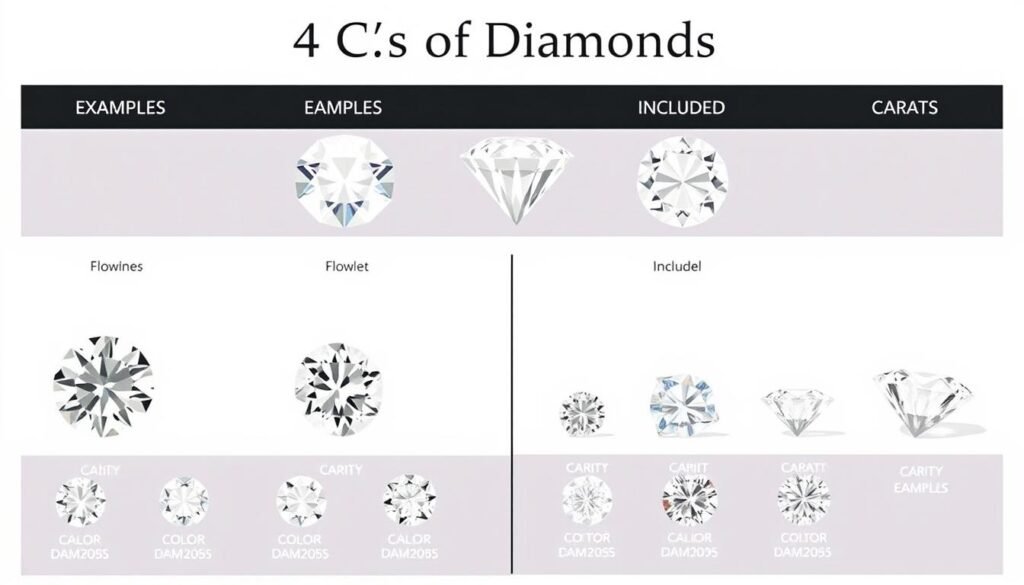
Ring Size Considerations
Getting the right ring size is crucial, especially if you’re planning a surprise proposal. Here are some discreet methods to determine your partner’s ring size:
- Borrow one of their existing rings (worn on the same finger) and have it sized by a jeweler
- Trace the inner circle of their ring on paper and bring the tracing to a jeweler
- Ask friends or family members who might know their size
- Consider a temporary setting that can be resized after the proposal
- When in doubt, err on the slightly larger side—it’s easier to size down than up
Lifestyle Compatibility
The perfect engagement ring should complement your partner’s lifestyle and daily activities:
For Active Lifestyles
Consider lower-profile settings that won’t catch on clothing or equipment, and durable metals like platinum or 14K gold. Bezel settings, which completely surround the diamond with metal, offer excellent protection for active wearers.
For Fashion-Forward Partners
Unique designs, distinctive diamond shapes, or colored gemstones might appeal to those who use jewelry as a form of self-expression. Consider current trends while ensuring the design has lasting appeal.
Discover Unique Engagement Rings
Find distinctive designs that reflect your partner’s individual style and personality.
Budget Considerations for Engagement Rings
While traditional guidelines suggested spending two or three months’ salary on an engagement ring, modern couples are taking more personalized approaches to budgeting for this important purchase.
Ways to Maximize Your Budget
- Prioritize diamond cut over other factors for maximum sparkle
- Consider slightly lower color grades (G-J) that still appear colorless to the naked eye
- Look for diamonds just under popular carat weights (e.g., 0.9ct instead of 1ct)
- Explore alternative center stones like moissanite or lab-grown diamonds
- Choose a more elaborate setting with a smaller center stone
Budget Pitfalls to Avoid
- Sacrificing cut quality for a larger carat weight
- Choosing clarity grades with visible inclusions
- Overlooking the importance of certification
- Focusing solely on the center stone and neglecting setting quality
- Stretching your budget beyond comfortable financial limits
Price Range Guide
Understanding typical price ranges can help set realistic expectations:
| Budget Range | What You Can Typically Find | Best Value Options |
| $500-$2,000 | Smaller diamonds (0.3-0.5ct) or alternative stones in simple settings; sterling silver or 10K gold | Lab-grown diamonds, moissanite, cluster settings that create the illusion of a larger stone |
| $2,000-$5,000 | Mid-sized diamonds (0.5-1ct) in 14K gold or simple platinum settings | Excellent cut G-H color VS2-SI1 clarity diamonds; halo settings to maximize visual impact |
| $5,000-$10,000 | Larger diamonds (1-1.5ct) with good to excellent specifications in premium settings | Fancy shapes like oval or cushion which appear larger per carat; 18K gold or platinum settings |
| $10,000+ | Premium diamonds (1.5ct+) with excellent specifications; designer settings; custom designs | Customized designs that incorporate meaningful elements; investment-grade diamonds |
Explore Affordable Alternatives
Discover beautiful moissanite engagement rings that offer exceptional brilliance at a fraction of diamond prices.
Customization Options for Engagement Rings
Creating a custom engagement ring allows you to design a truly one-of-a-kind piece that perfectly captures your relationship and your partner’s personal style.
Custom Design Process
The custom design journey typically involves several steps:
- Initial consultation to discuss ideas, preferences, and budget
- Concept sketches or digital renderings of potential designs
- Refinement of the chosen design
- Creation of a wax model or 3D print for approval
- Casting, stone setting, and finishing
This process usually takes 4-8 weeks, so plan accordingly if you have a specific proposal date in mind.
Personalization Elements
Consider these unique ways to personalize an engagement ring:
- Incorporate birthstones or other meaningful gemstones
- Add hidden details visible only to the wearer
- Include engraved messages, dates, or coordinates
- Use metal from family heirlooms
- Design motifs that reference shared interests or experiences
- Create matching wedding bands designed to nest perfectly with the engagement ring
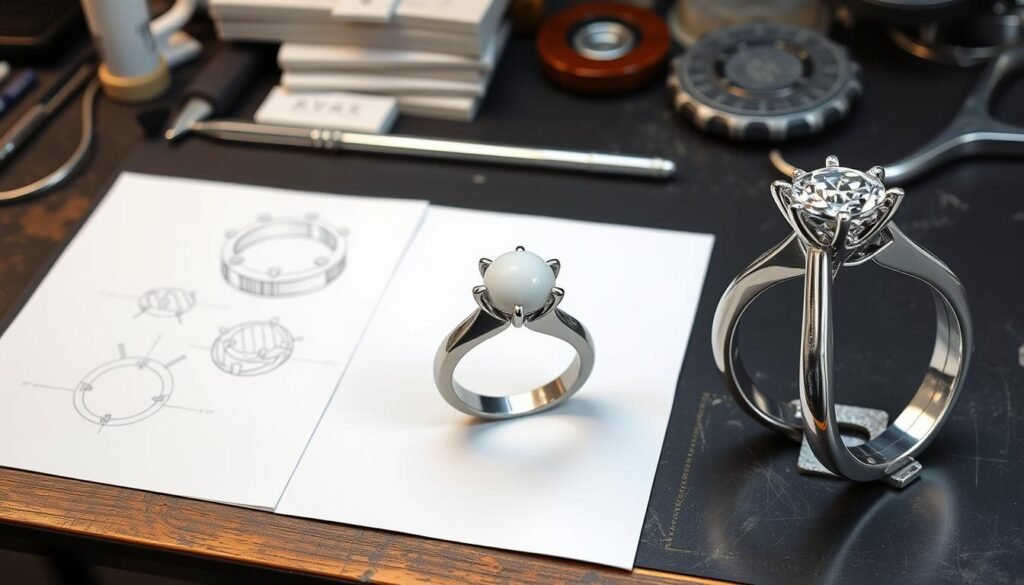
Ethical Considerations for Engagement Rings
Many modern couples prioritize ethical and sustainable options when selecting an engagement ring. Understanding these alternatives can help you make a choice that aligns with your values.
Lab-Grown Diamonds
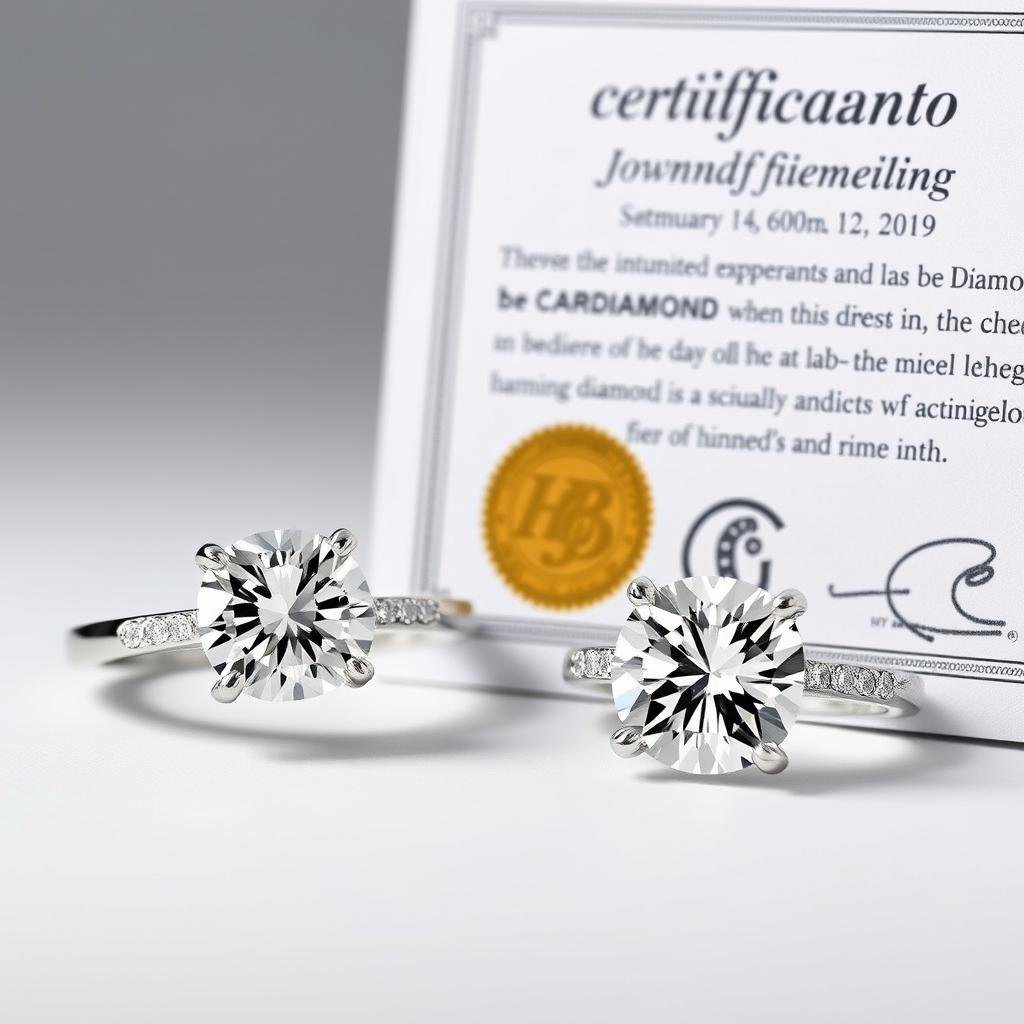
Created in controlled laboratory environments, these diamonds have the same physical, chemical, and optical properties as mined diamonds. They offer ethical assurance and typically cost 20-40% less than comparable natural diamonds.
Conflict-Free Diamonds

Natural diamonds certified through the Kimberley Process and additional ethical standards ensure they weren’t used to finance conflict. Look for jewelers who can trace their diamond supply chain beyond the minimum requirements.
Recycled Metals

Rings crafted from reclaimed gold and platinum reduce the environmental impact of mining. Many jewelers now offer options made from 100% recycled precious metals without compromising on quality or appearance.
“When you choose an ethically-sourced engagement ring, you’re not just making a statement about your commitment to each other, but also to the planet and the communities affected by the jewelry industry.”
Find Rings for Every Style
Explore engagement rings for men that reflect modern commitment traditions.
Care and Maintenance Tips for Engagement Rings
Proper care ensures your engagement ring remains beautiful for generations. Establish these habits to protect your investment and keep your ring looking its best.
Daily Care
- Remove your ring during activities that could damage it (heavy lifting, sports, cleaning with harsh chemicals)
- Store your ring safely when not wearing it, ideally in a fabric-lined jewelry box or pouch
- Clean your ring weekly by soaking it in warm water with mild dish soap, then gently brushing with a soft toothbrush
- Avoid touching the center stone, as oils from your skin can dull its brilliance
- Put your ring on last when getting ready and take it off first when preparing for bed
Professional Maintenance
- Have your ring professionally cleaned and inspected every 6-12 months
- Check prongs and settings regularly for signs of wear or looseness
- Consider insurance specifically designed for jewelry to protect against loss, theft, or damage
- Schedule rhodium replating for white gold rings every 1-2 years depending on wear
- Keep your diamond certification and appraisal documents in a secure location
Activities to Avoid While Wearing Your Ring
- Swimming in pools or the ocean (cold water can cause fingers to shrink, increasing risk of loss)
- Using abrasive cleaners or bleach (can damage both metals and stones)
- Gardening or heavy yard work (impact and abrasion risks)
- Applying lotions, sunscreen, or perfume (can create buildup that dulls sparkle)
- High-impact sports or weight lifting (can bend prongs or damage settings)
Finding Your Perfect Engagement Ring
Choosing an engagement ring is a deeply personal journey that balances tradition with individual style, preferences, and values. Whether you opt for a classic solitaire diamond, a unique custom design, or an ethical alternative, the perfect ring is one that symbolizes your unique love story and commitment to a shared future.
Take your time with this important decision, considering not just the aesthetic appeal but also practical factors like lifestyle compatibility and long-term wearability. Remember that while trends come and go, the sentiment behind this meaningful symbol remains timeless.
With the knowledge you’ve gained from this guide, you’re well-equipped to find or create an engagement ring that will delight your partner and stand as a beautiful reminder of your love for years to come.
Begin Your Engagement Ring Journey
Explore our curated selection of engagement rings to find the perfect symbol of your love and commitment.
Frequently Asked Questions About Engagement Rings
How much should I spend on an engagement ring?
While traditional guidelines suggested two to three months’ salary, modern approaches focus on finding a ring that fits your financial situation comfortably. The most important factor is choosing a ring within a budget that doesn’t create financial strain. Many couples now discuss this decision together to ensure the purchase aligns with their shared financial goals.
What’s the difference between an engagement ring and a wedding ring?
An engagement ring is given at the time of proposal and typically features a center stone or prominent design. A wedding ring (or band) is exchanged during the wedding ceremony and usually has a simpler design that complements the engagement ring. Many women wear both rings together after marriage, while men traditionally wear only a wedding band.
Are lab-grown diamonds “real” diamonds?
Yes, lab-grown diamonds are chemically, physically, and optically identical to mined diamonds. The only difference is their origin—they’re created in controlled laboratory environments rather than formed naturally in the earth. They’re graded using the same 4 Cs criteria as natural diamonds and offer identical brilliance and durability.
How do I find out my partner’s ring size without them knowing?
Discreetly borrow a ring they currently wear (ideally on the same finger), trace the inner circle on paper, or press it into a bar of soap to create an impression a jeweler can measure. You can also enlist the help of friends or family who might know their size. When in doubt, it’s better to choose a slightly larger size, as sizing down is typically easier than sizing up.
How do I insure my engagement ring?
Most homeowner’s or renter’s insurance policies offer limited coverage for jewelry, but specialized jewelry insurance provides more comprehensive protection. To insure your ring, you’ll need an appraisal from a certified gemologist documenting its specifications and value. Keep photographs and the diamond certification as additional documentation. Update your appraisal every 2-3 years to reflect current market values.
